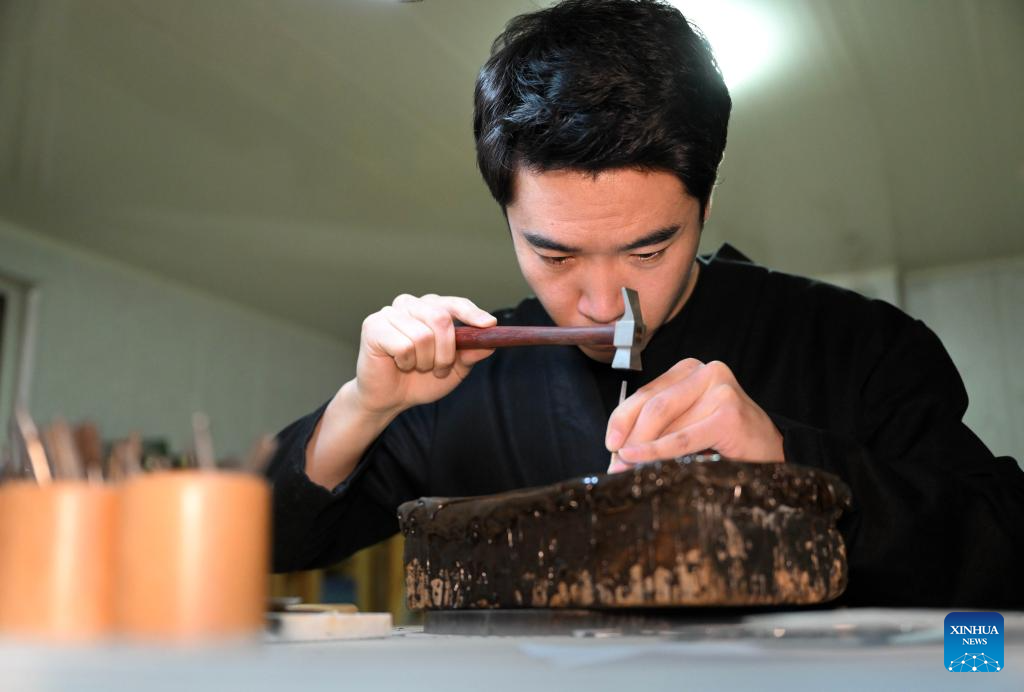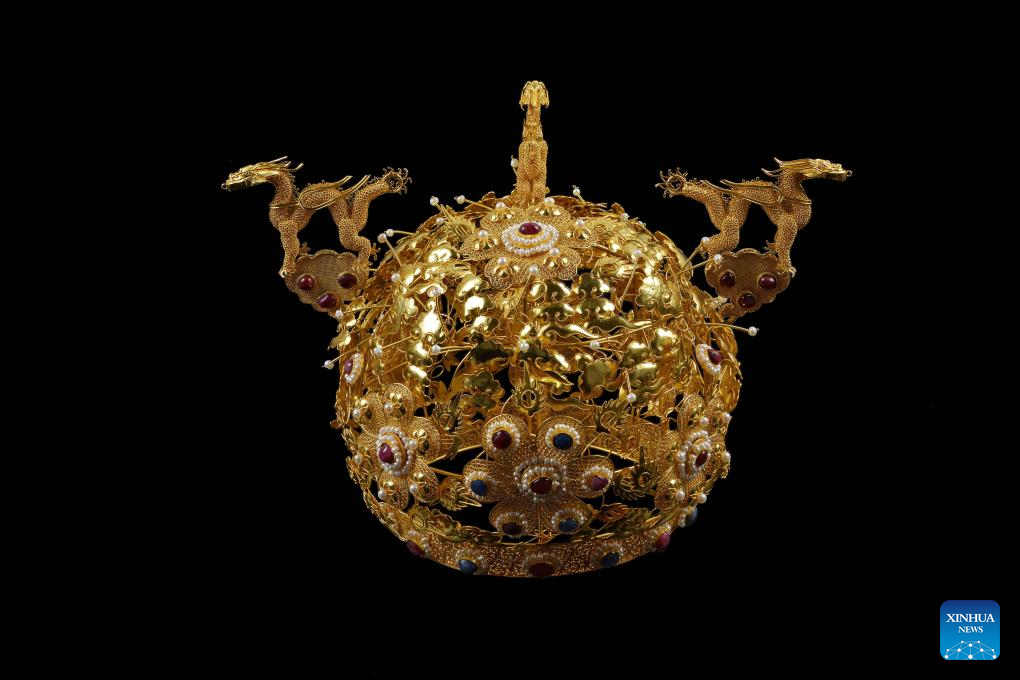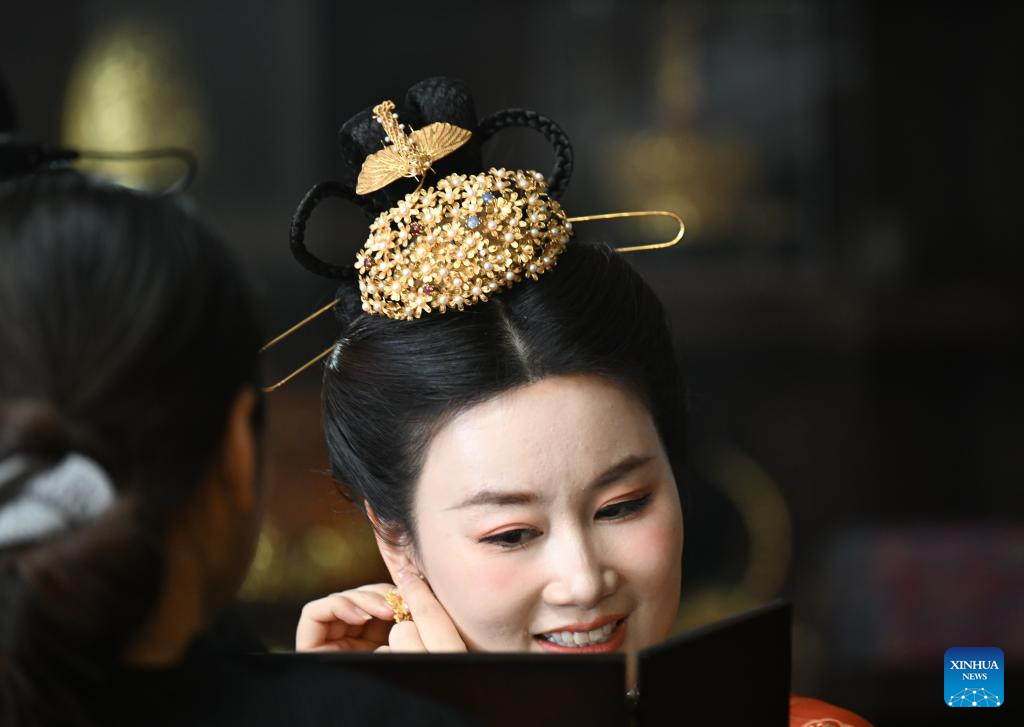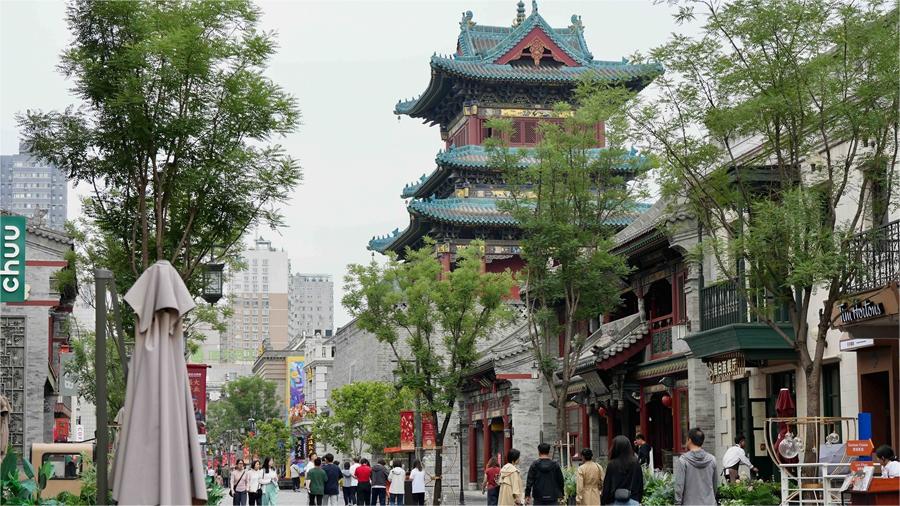Inheritor passes on Ma's Filigree Mosaic art in Tianjin
Ma Sai, born in the 1990s, has devoted himself to improving the skills of Ma's Filigree Mosaic art, a city-level intangible cultural heritage in north China's Tianjin Municipality.
In March this year, Ma was included in China's first national list of rural artisans.

Ma Sai makes a filigree mosaic artwork at his studio in Liuzhuang Village of Wuqing District of Tianjin, north China, March 19, 2024. (Xinhua/Zhao Zishuo)
Filigree Mosaic art was first seen in the Spring and Autumn period (770 B.C.-476 B.C.) and was listed as a national-level intangible cultural heritage in 2008.
Ma said two main steps are involved in the craft, namely, making filigree and making mosaic. Using malleable materials such as gold and silver to make thin threads and then forming different shapes is called filigree art, while inlaying pearls or gems on shaped metal frames is called mosaic art.
Filigree Mosaic art goes through complicated procedures. Taking phoenix-shaped earrings as an example, the entire process requires dozens of steps, Ma said.
It takes a few hours or even one to two days to make a small accessory with the craft, he noted.

This undated file photo shows a Ma's filigree mosaic artwork. (Photo by Zhong Xia/Xinhua)
"The process of reproducing intricate artifacts is very long. In the preliminary stage, I need to review relevant historical records and pictures, and sometimes even go to museums to study the original pieces for reference. It takes me over a month to finish just a single piece of such kind of filigree mosaic artwork," Ma added.
Ma has made over 100 filigree mosaic accessories. Artworks he designed have been used as props in costume dramas, films and headdresses for traditional Chinese wedding attire. An accessory made with the art form by him appeared on the head of a Chinese actress during the Spring Festival Gala of the Year of the Dragon, staged by China Central Television.

This photo taken on March 23, 2024 shows filigree mosaic artworks displayed at the Wuqing museum in Tianjin, north China. (Xinhua/Sun Fanyue)
Last year, a piece of filigree mosaic artwork Ma designed won a prize at the China Arts and Crafts Expo.
"As an inheritor of the intangible cultural heritage of Filigree Mosaic art, I'm gratified to see the popularity of traditional Chinese attire, new Chinese-style clothing, and other elements of Guochao," Ma said. Guochao, also known as "China-chic," is a fashion trend featuring modern designs mixed with traditional cultural elements.
"We will continue to carry forward fine traditional Chinese culture and make more exquisite traditional accessories part of people's daily lives," he added.

An enthusiast for Hanfu tries a head decoration of filigree mosaic at a studio in Tianjin, north China, March 7, 2024. (Xinhua/Sun Fanyue)
Photos
Related Stories
- China expects more exchanges, cooperation with all parties in world heritage protection
- NW China's Qinghai injects new vitality into traditional sachets
- Presentation on China's cultural heritage held in Malta
- ISO technical committee on cultural heritage protection inaugurated at Palace Museum
- China's top legislature launches enforcement inspection of intangible cultural heritage law
- Intangible cultural heritage injects new vitality into culture, tourism
- ISO establishes new secretariat in China for cultural heritage conservation
Copyright © 2024 People's Daily Online. All Rights Reserved.









